Refer to the given figures and answer

Read the given statements which represent the features of the figures A,B,C and D Mathc them correctly and select the correct option.
(i) Chromosomes appear like a ball of wool (spireme stage)
(ii) Reformation of nuclear envelope, nucleolus, Golgi complex and ER
(iii) Formation of equatorial plate
(iv) Splitting of centromeres
iv,iii,i,ii
iii,iv,i,ii
ii,iii,i,iv
iv,ii,iii,i
The correct Answer is:A
Topper's Solved these Questions
- CELL CYCLE AND CELL DIVISIONBOOK - NCERT FINGERTPS ENGLISHCHAPTER - CELL CYCLE AND CELL DIVISIONEXERCISE - MEIOSIS
49 Videos
- CELL CYCLE AND CELL DIVISIONBOOK - NCERT FINGERTPS ENGLISHCHAPTER - CELL CYCLE AND CELL DIVISIONEXERCISE - NCERT
10 Videos
- CELL CYCLE AND CELL DIVISIONBOOK - NCERT FINGERTPS ENGLISHCHAPTER - CELL CYCLE AND CELL DIVISIONEXERCISE - Cell Cycle And Cell Division
130 Videos
- CELL - THE UNIT OF LIFEBOOK - NCERT FINGERTPS ENGLISHCHAPTER - CELL - THE UNIT OF LIFEEXERCISE - Cell - The Unit Of Life
159 Videos
- CHEMICAL COORDINATION AND INTEGRATIONBOOK - NCERT FINGERTPS ENGLISHCHAPTER - CHEMICAL COORDINATION AND INTEGRATIONEXERCISE - All Questions
126 Videos
Similar Questions
Given figures (i), (ii), (iii) and (iv) represent certain parts/structures of animals. Identify the pairs of structures that are analogous to each other and select the correct option.
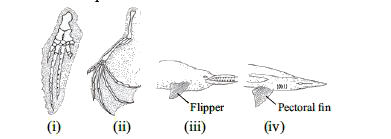
View Solution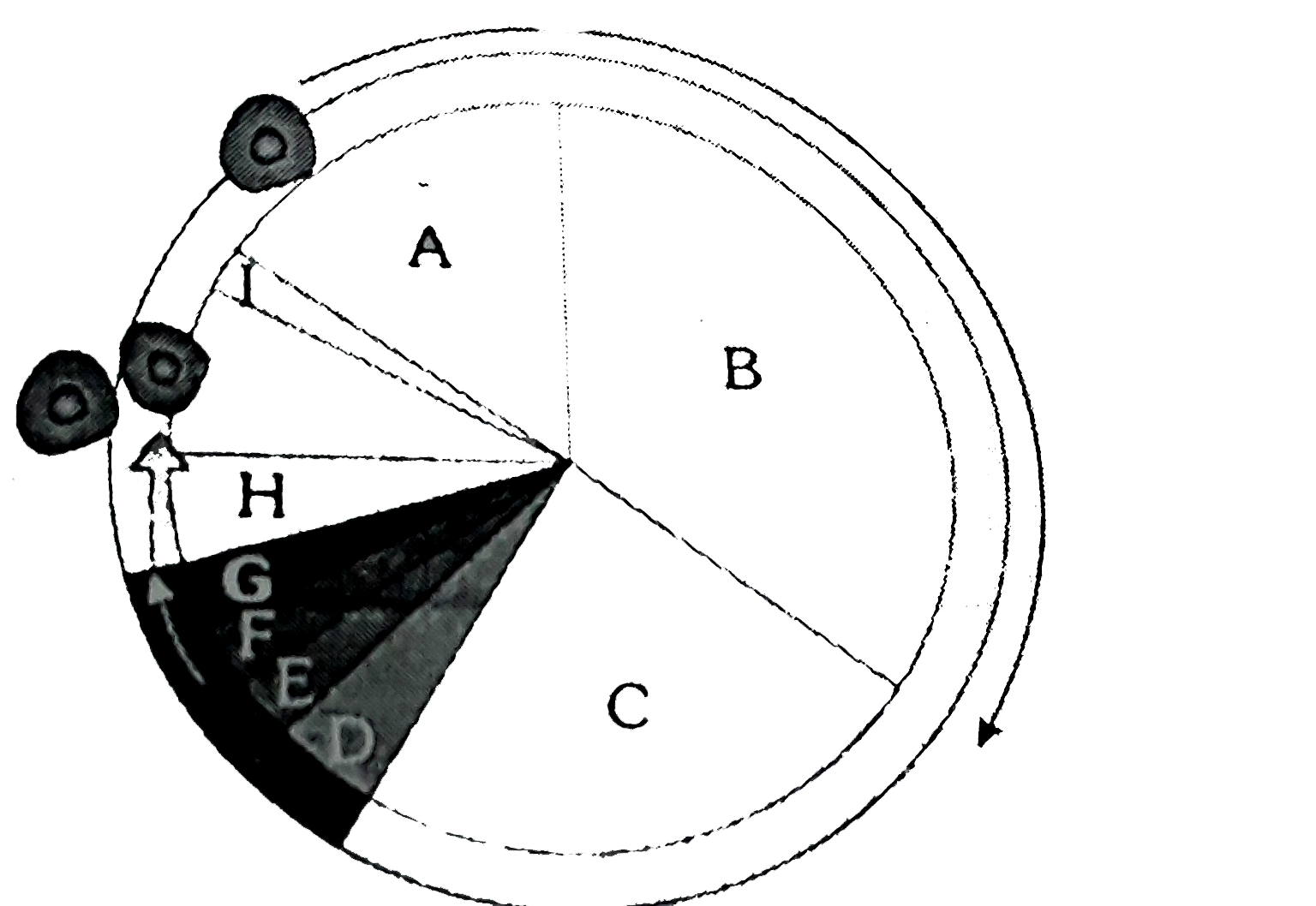
Answer the following questions regarding the events carried out in the labelled parts of the ab ove given diagram.
(1) DNA synthesis occurs in
(2) Condenstaion of chromosomal material takes place in
(3) Attachement of spindle fibres to kinetochores of chromosomes during
(4) Initiation of the assembly of mitotic spindle during
(5). Splitting of centromere and separation of chromatids in
(6) Movement of chromatids to opposite poles during
(7) Reformation of nucleolus, Golgi complex and ER occurs in
(8) Alignment of chromosomes along equitorial plate during
(9) Formation of cytoplasm during
(10) Preparation of cell division takes place during.
View Solution
Knowledge Check
Refer to the given figure representing mechanism of translocation and select the option which correctly identifies A.B and C
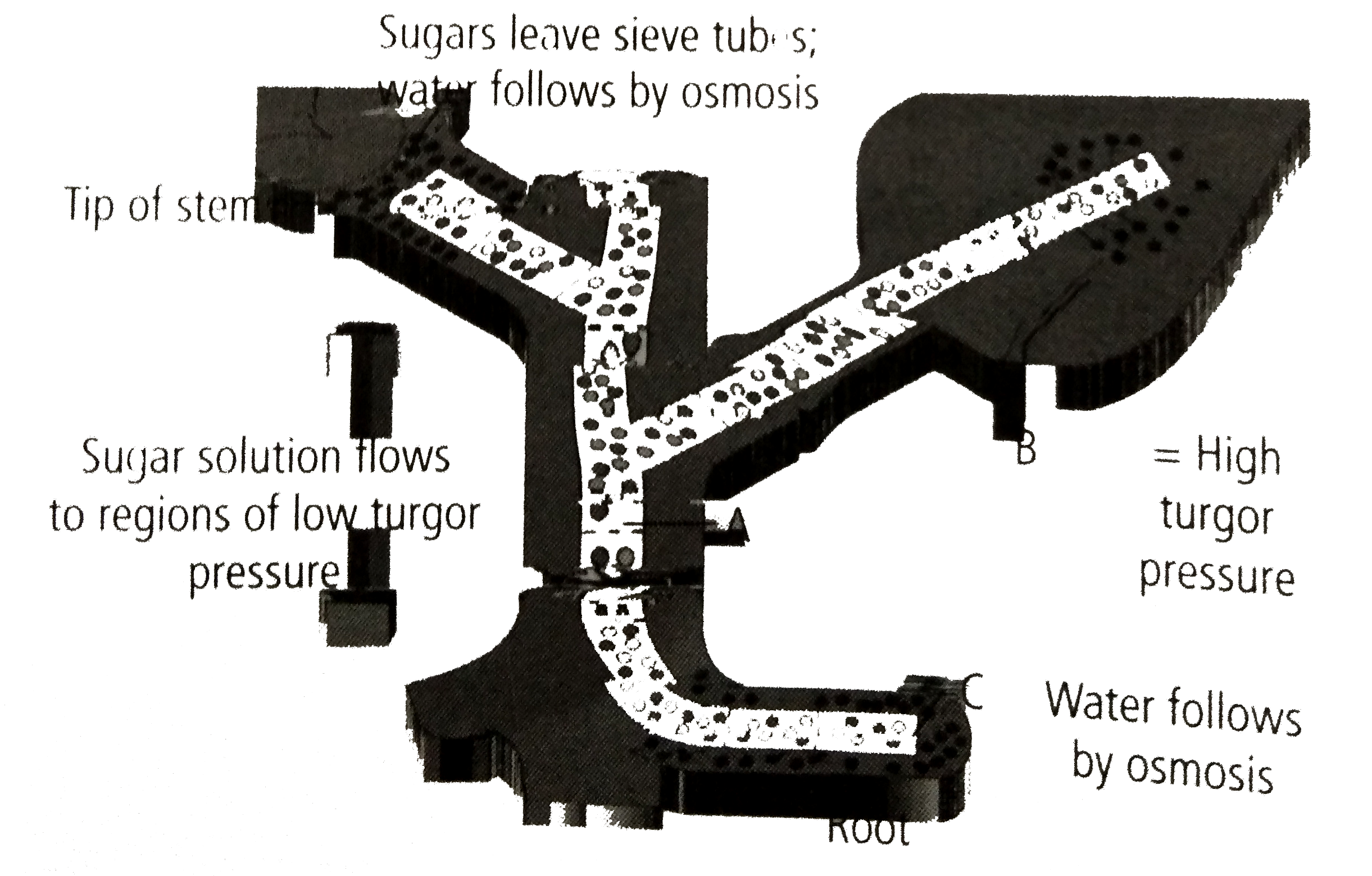 AA- phloem, B- Sugars enter tube, C-Sugars leave sieve tubeBA- Xylem, B - Sugars enter tube, C - Sugars leave sieve tubeCA- Xylem, B- Sugars leave sieve tube, C - Sugars enter sieve tubeDA- Phloem, B-Sugars leave sieve tube, C - Sugars enter phloem. It can be demonstrated by
AA- phloem, B- Sugars enter tube, C-Sugars leave sieve tubeBA- Xylem, B - Sugars enter tube, C - Sugars leave sieve tubeCA- Xylem, B- Sugars leave sieve tube, C - Sugars enter sieve tubeDA- Phloem, B-Sugars leave sieve tube, C - Sugars enter phloem. It can be demonstrated byRefer to the given figure representing mechanism of translocation and select the option which correctly identifies A.B and C
 AA- phloem ,B- Sugars enter tube , C-Sugars leave sieve tubeBA- Xylem , B - Sugars enter tube , C - Sugars leave sieve tubeCA- Xylem , B- Sugars leave sieve tube , C - Sugars enter sieve tubeDA- Phloem , B - Sugars leavs sieve tube , C - Sugars enter phloem, It can be demonstrated by
AA- phloem ,B- Sugars enter tube , C-Sugars leave sieve tubeBA- Xylem , B - Sugars enter tube , C - Sugars leave sieve tubeCA- Xylem , B- Sugars leave sieve tube , C - Sugars enter sieve tubeDA- Phloem , B - Sugars leavs sieve tube , C - Sugars enter phloem, It can be demonstrated byIn the given figure A,B,C,D,E and F represent some stages of hydrosere, Select the correct statement regarding these.
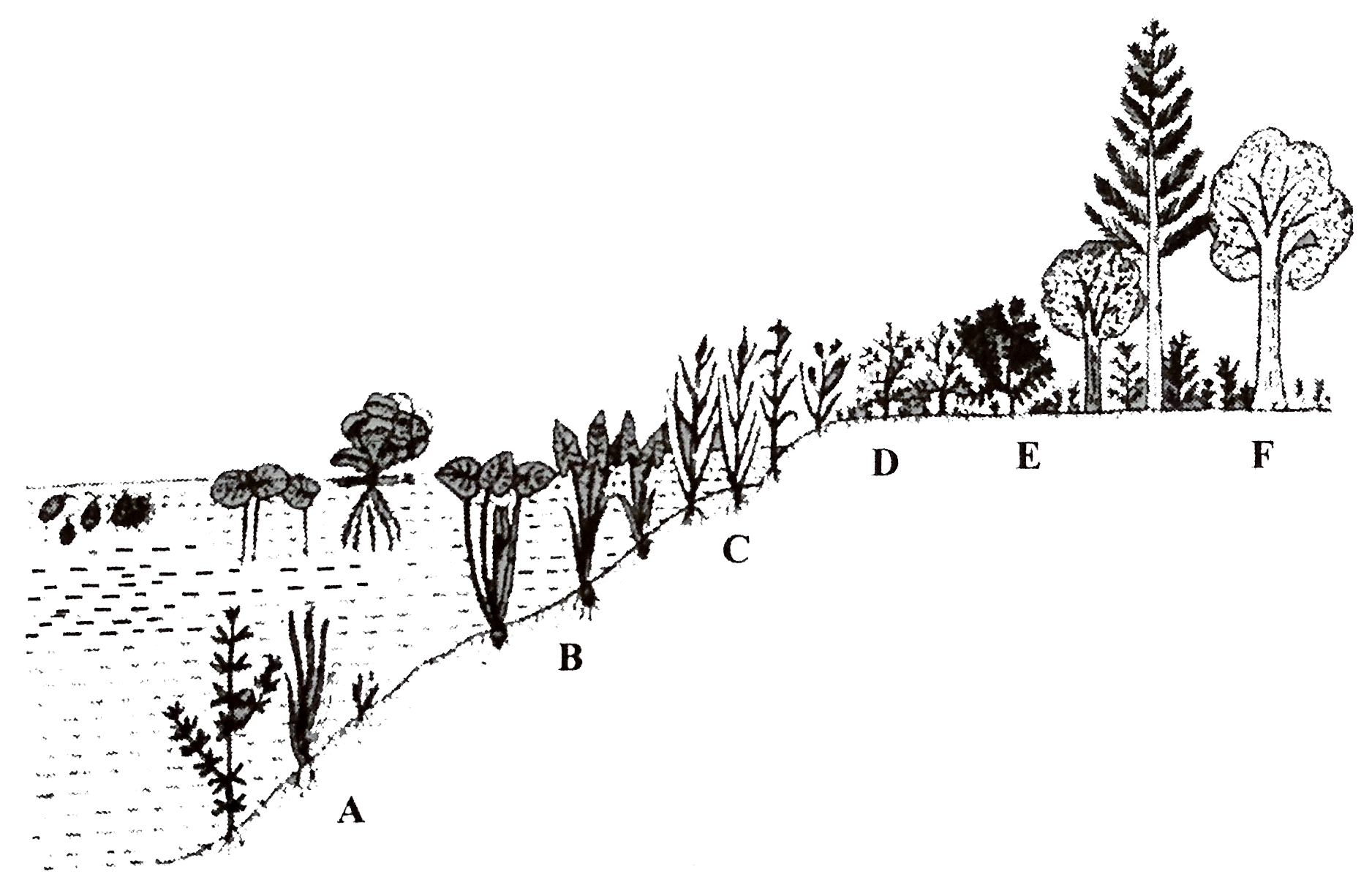 AHydrilla and Potamogeton occur in stage A,BPhragmites and Typha occurs in stage C, Carex and Cyperus occur in stage D.CAlinus and Populus occur in stage E, Accer and Quercus occur in stage F.Dall of these.
AHydrilla and Potamogeton occur in stage A,BPhragmites and Typha occurs in stage C, Carex and Cyperus occur in stage D.CAlinus and Populus occur in stage E, Accer and Quercus occur in stage F.Dall of these.
The four figures (A, B, C and D) given below represent four different types of animal tissues. Which one of these is correctly identified in the given options along with its correct location and function ?

View SolutionThe four figures (A, B, C and D) given below represent four different types of animal tissues. Which one of these is correctly identified in the given options along with its correct location and function ?

View SolutionIn the given figure A,B,C,D,E and F represent some stages of hydrosere, Select the correct statement regarding these.

View Solution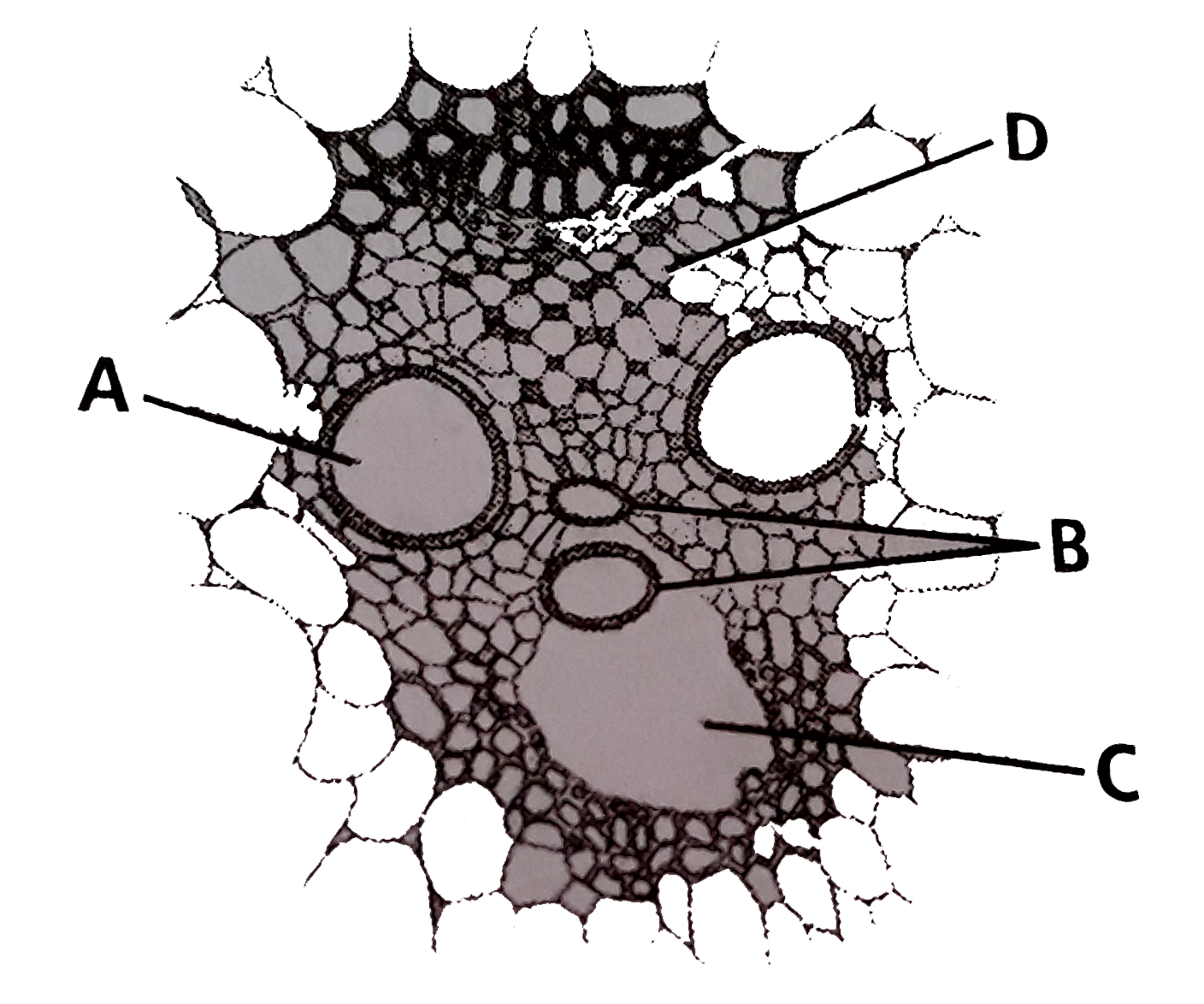
Refer to the given figure which represents a section of vascular bundles as seen in T.S. of a monocot stem and select the option that correctly labels A, B, C and D
View Solution
Refer to the given figure which represents a section of vascular bundles as seen in T.S. of a monocot stem and select the option that correctly labels A, B, C and D
View Solution
